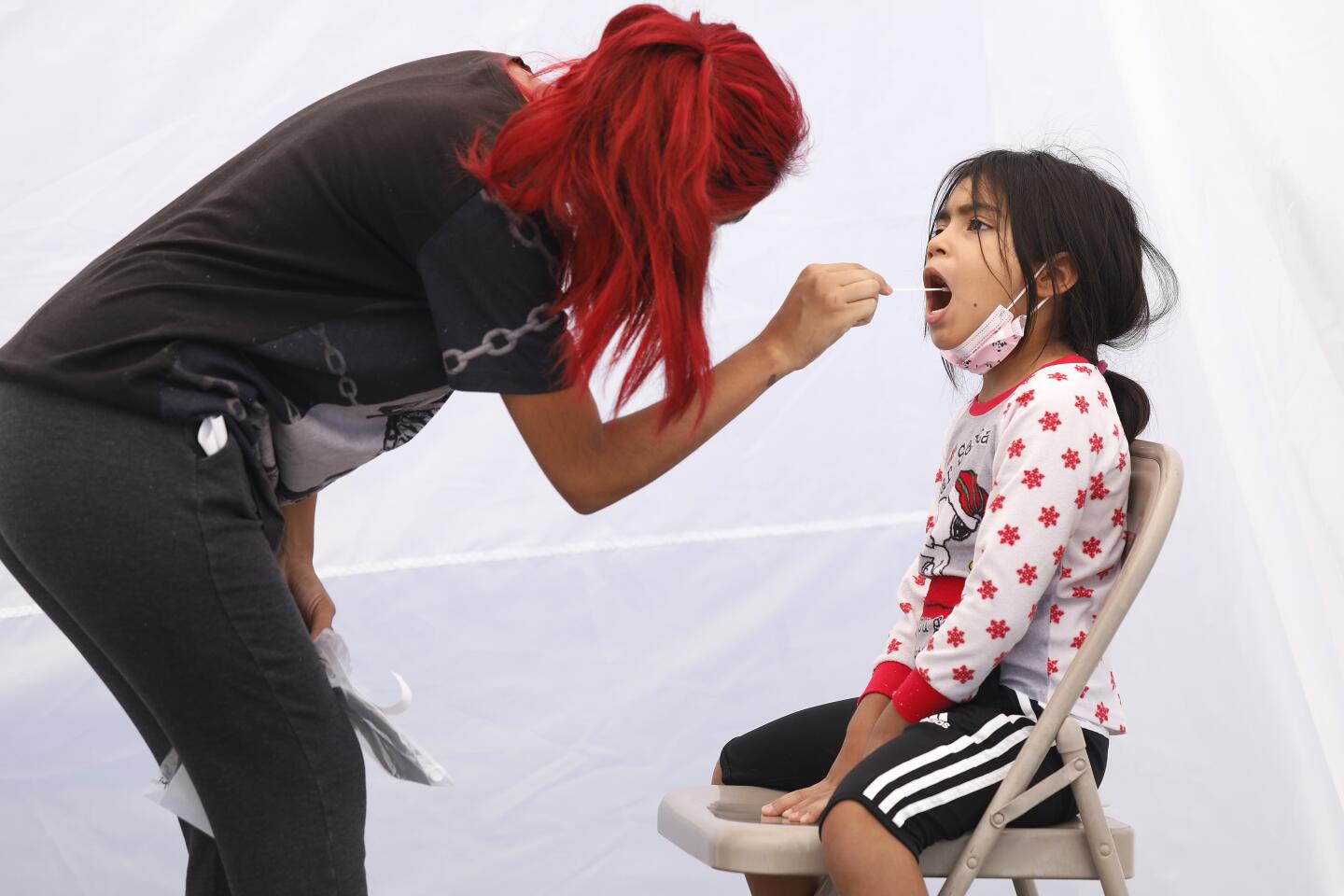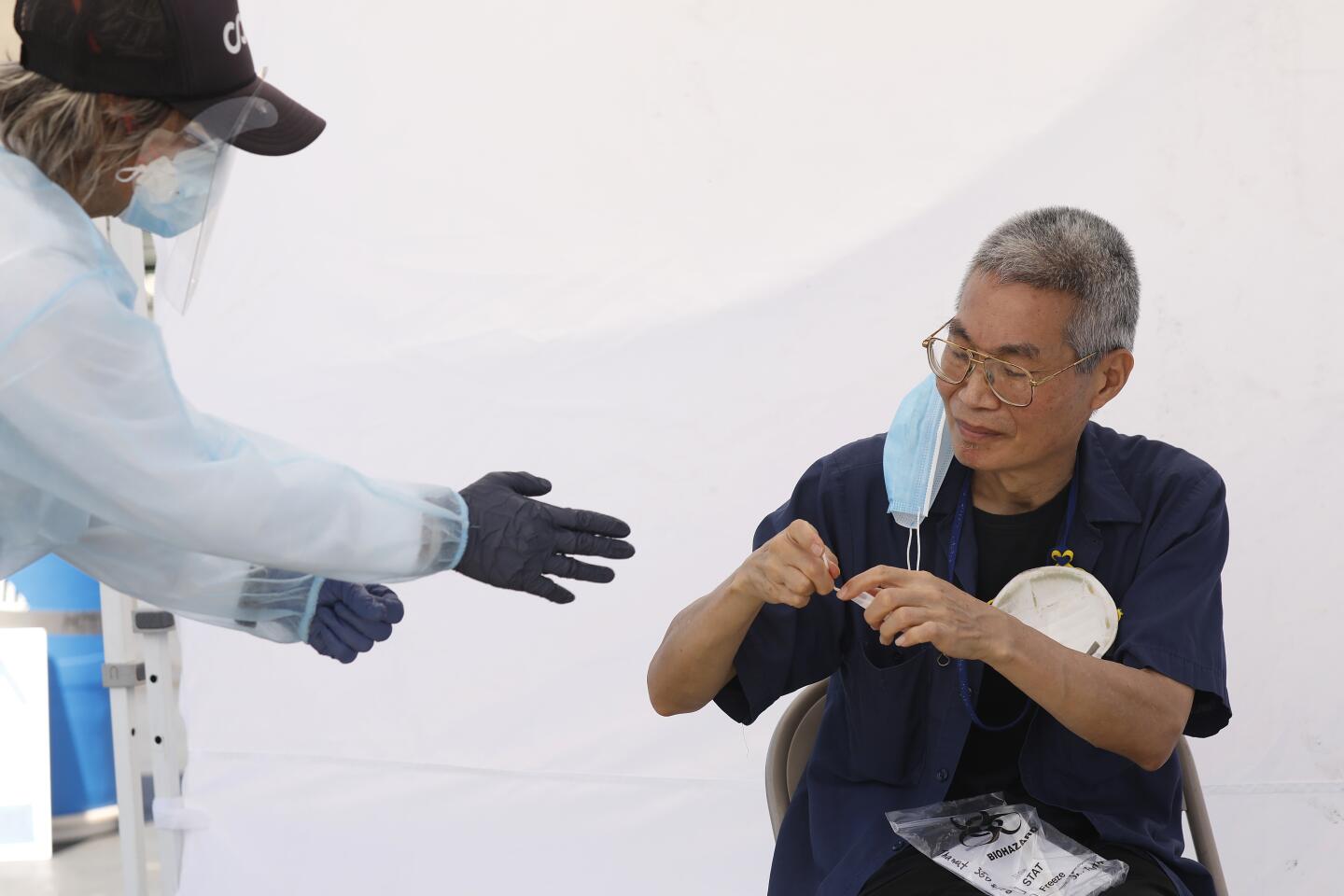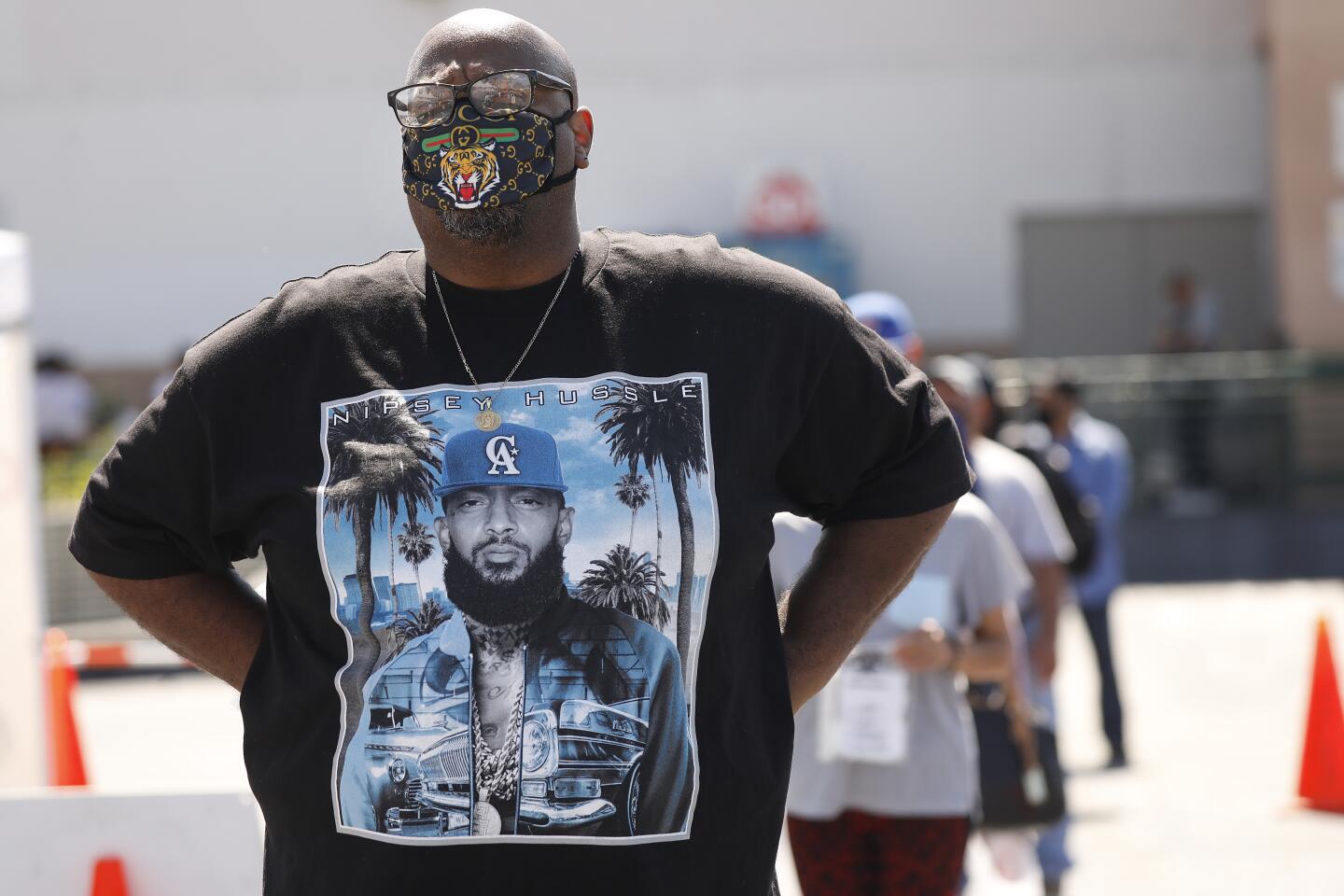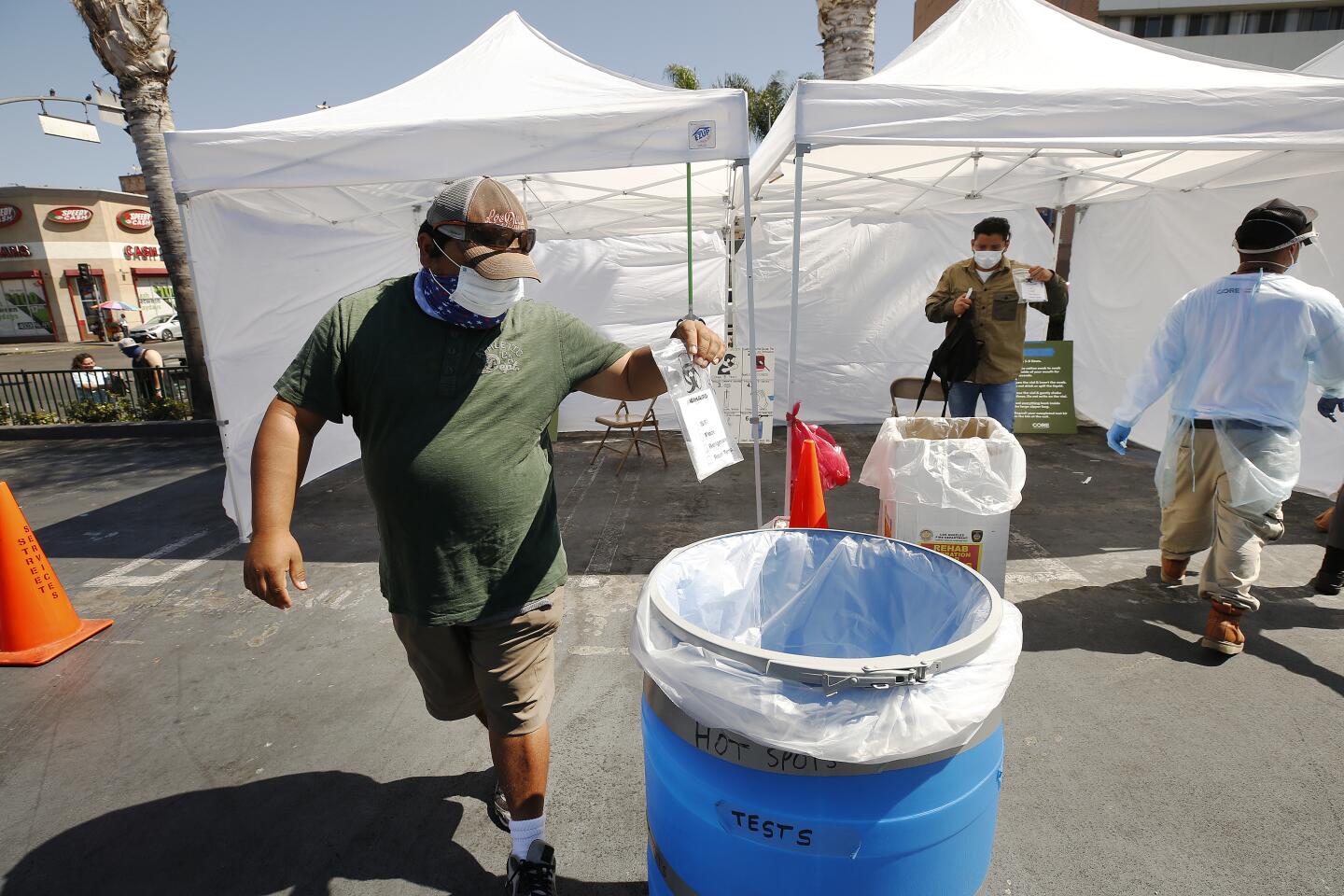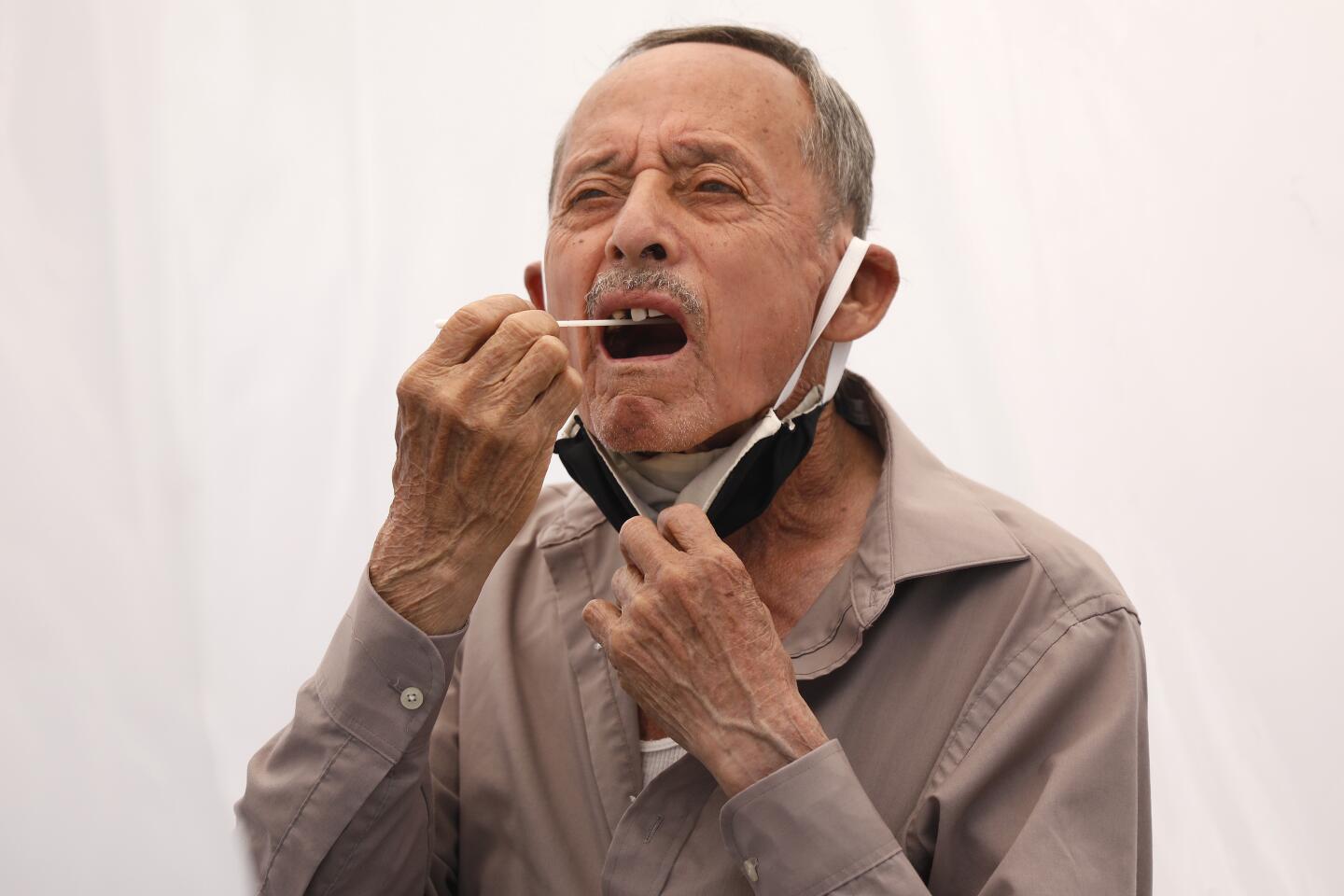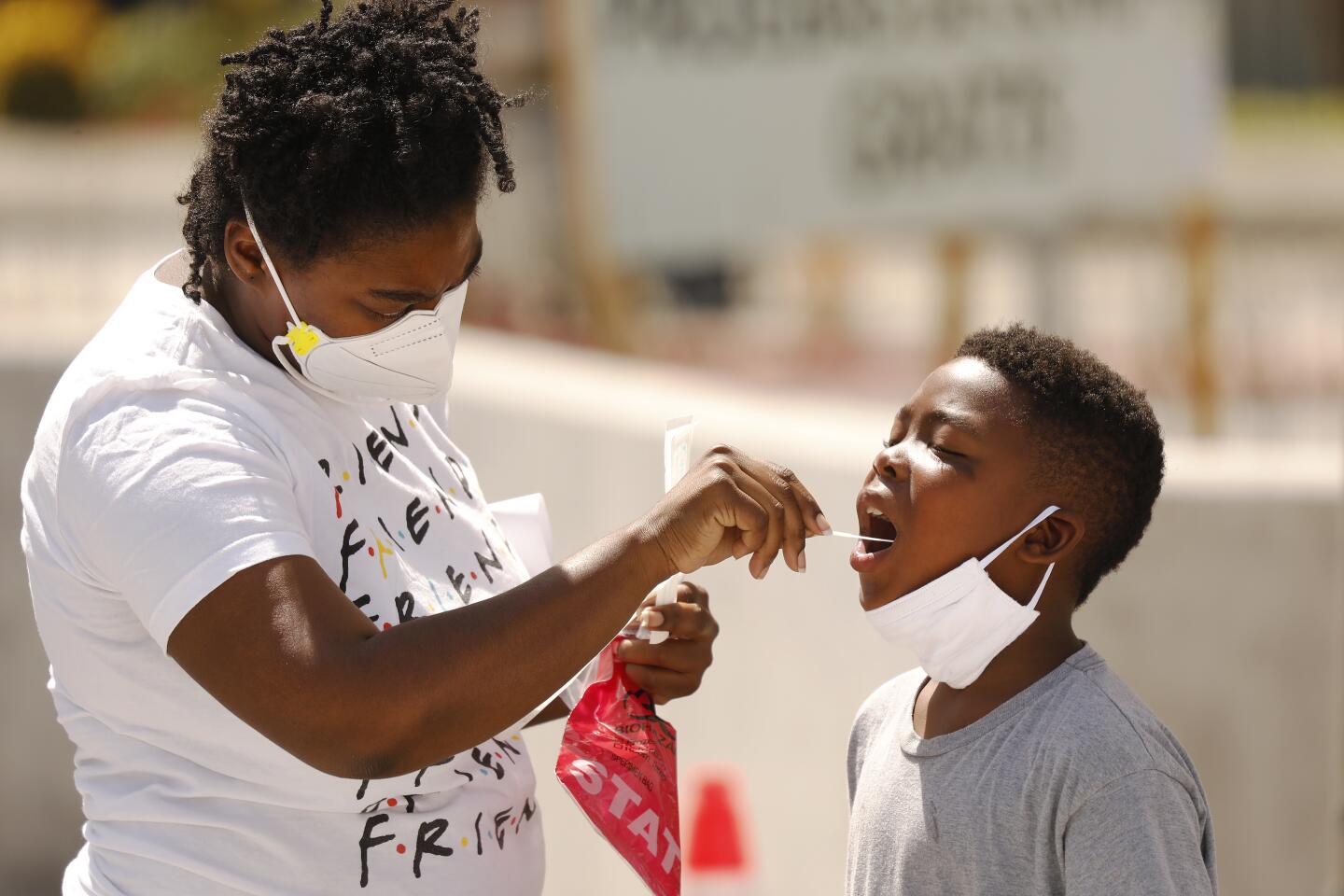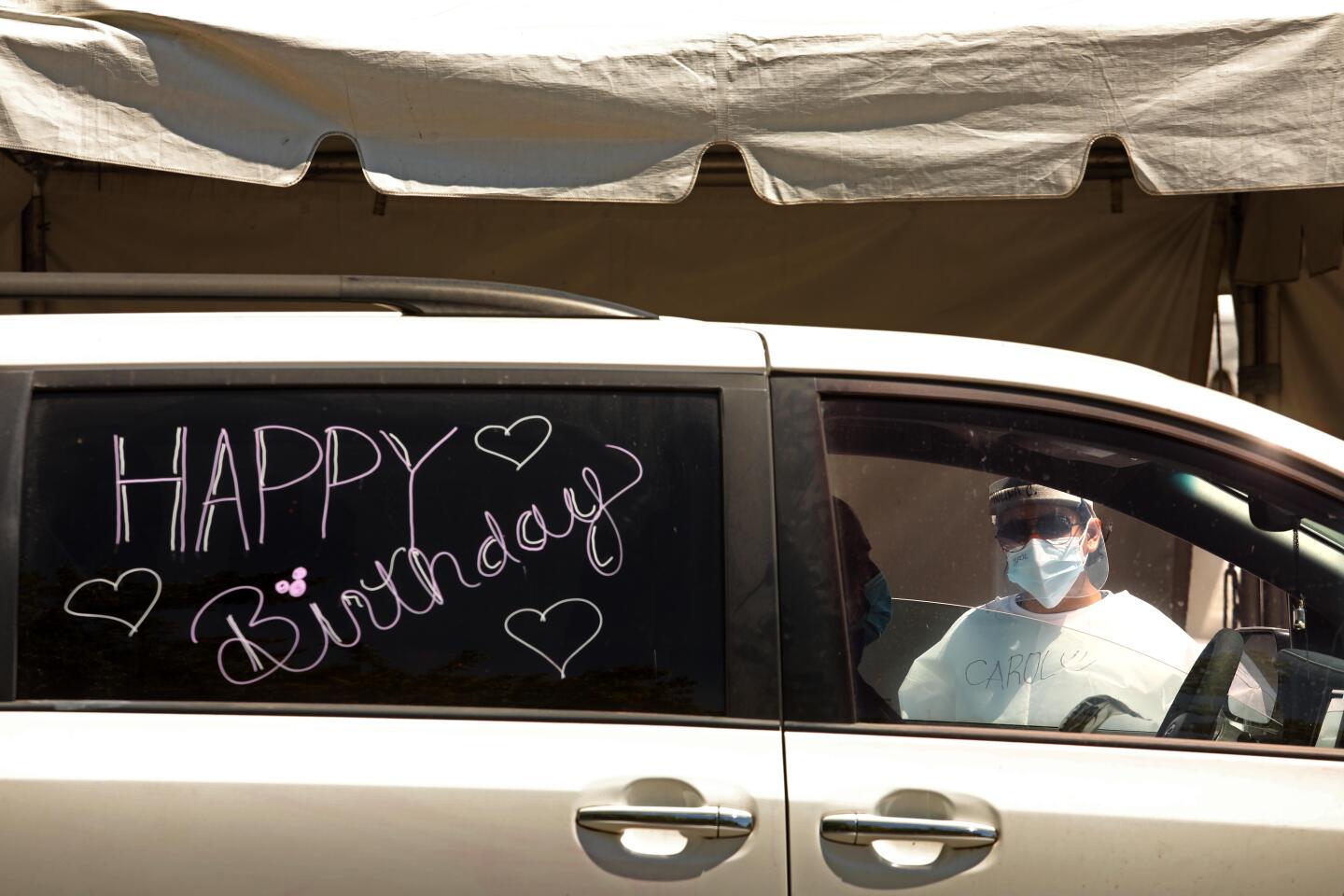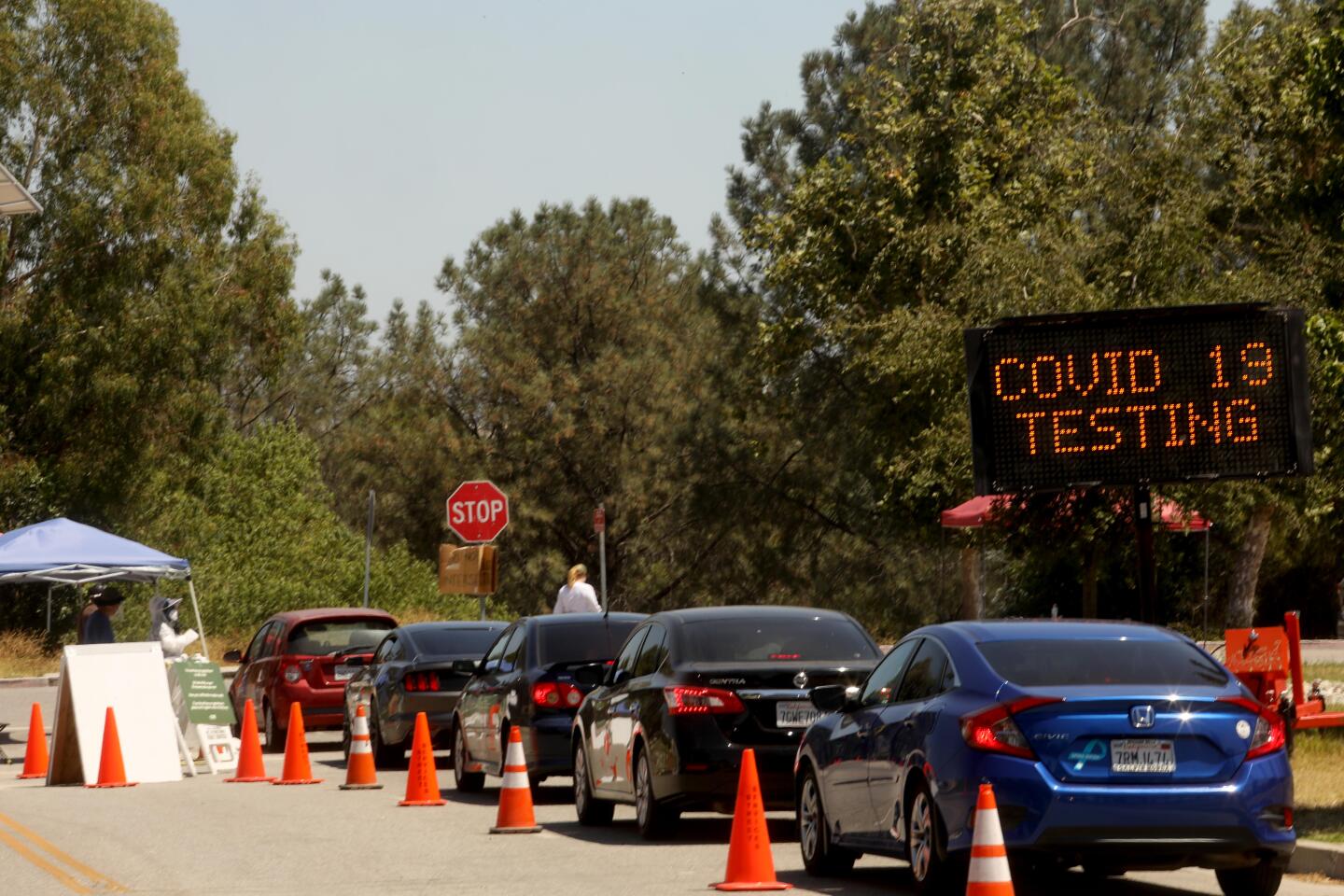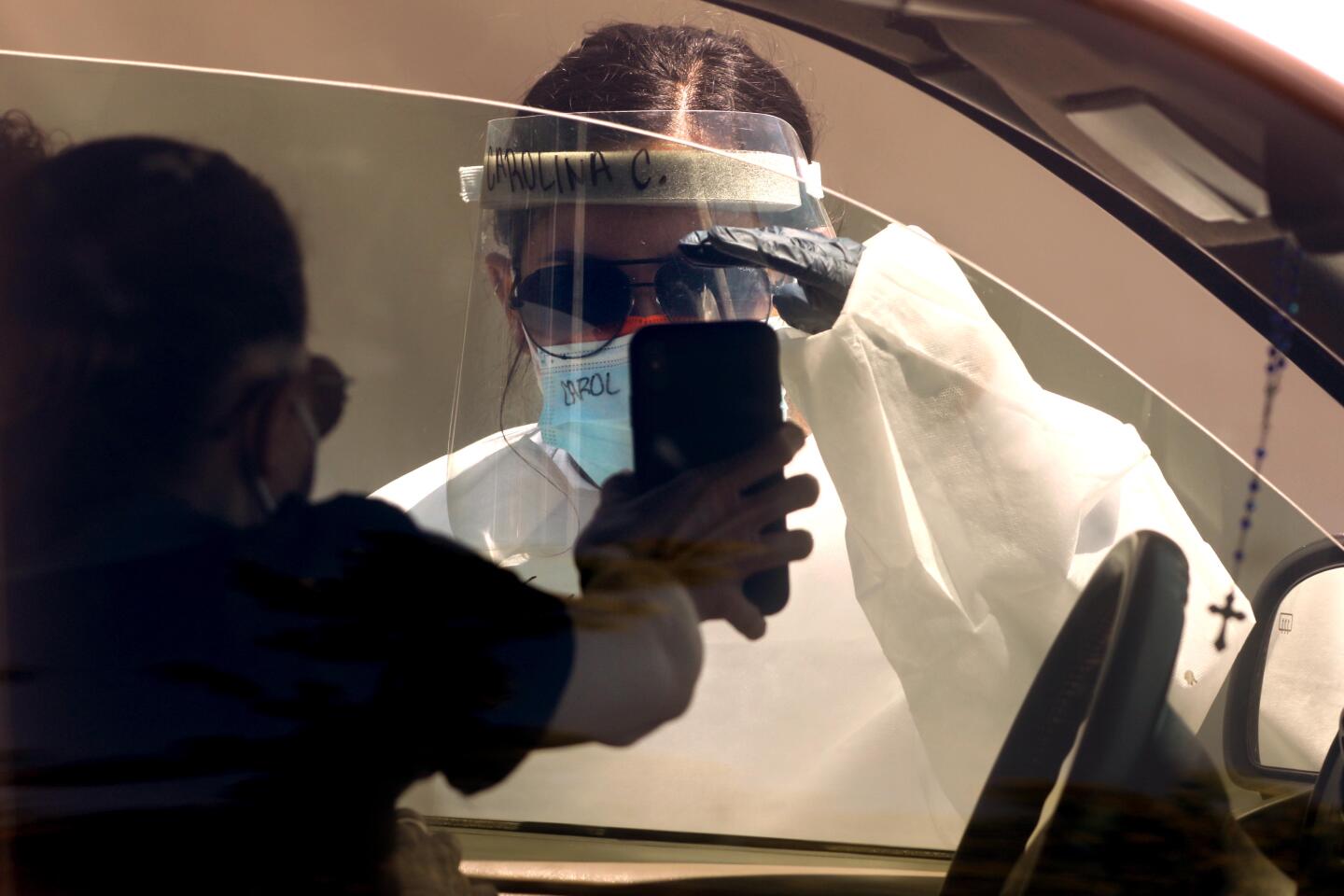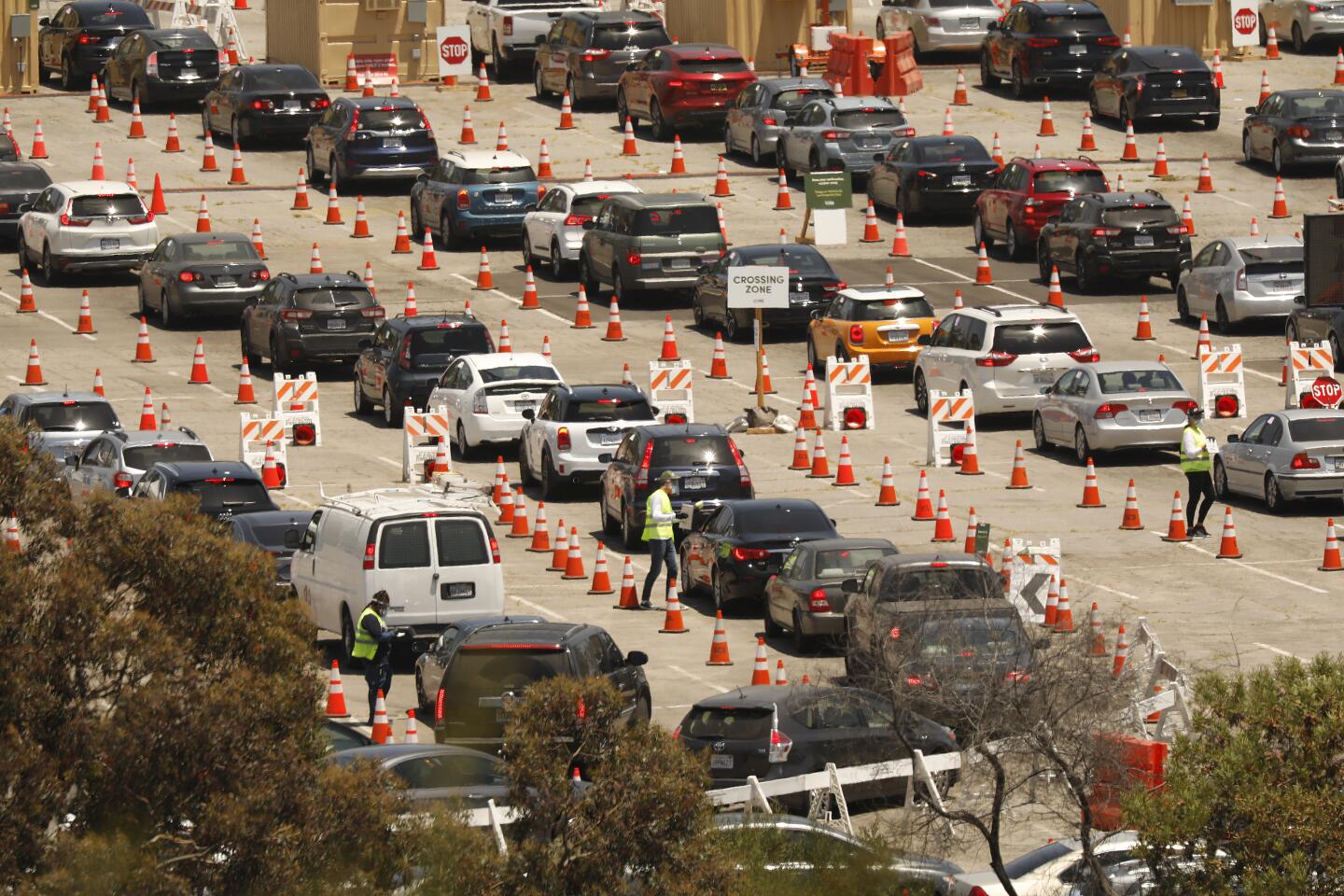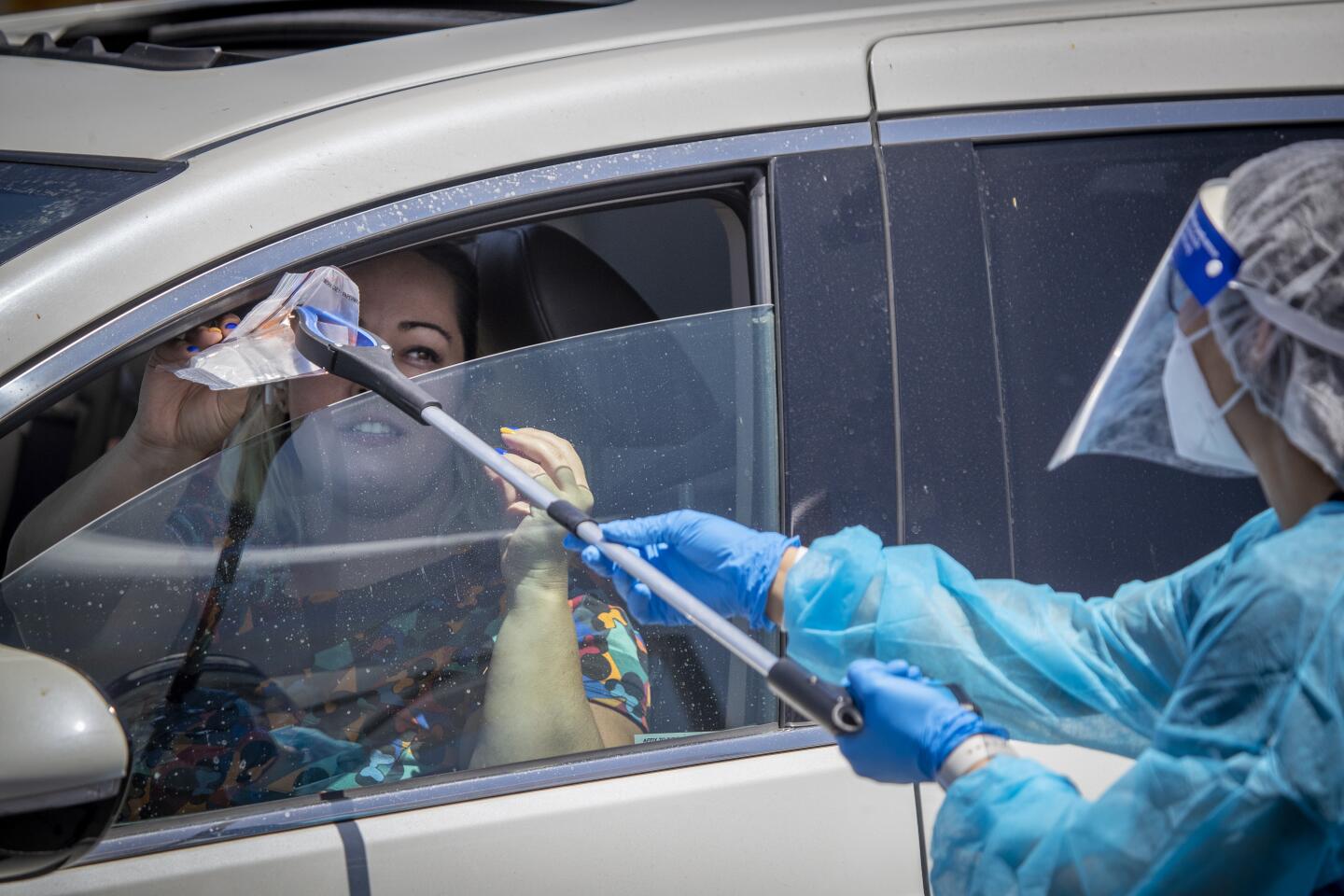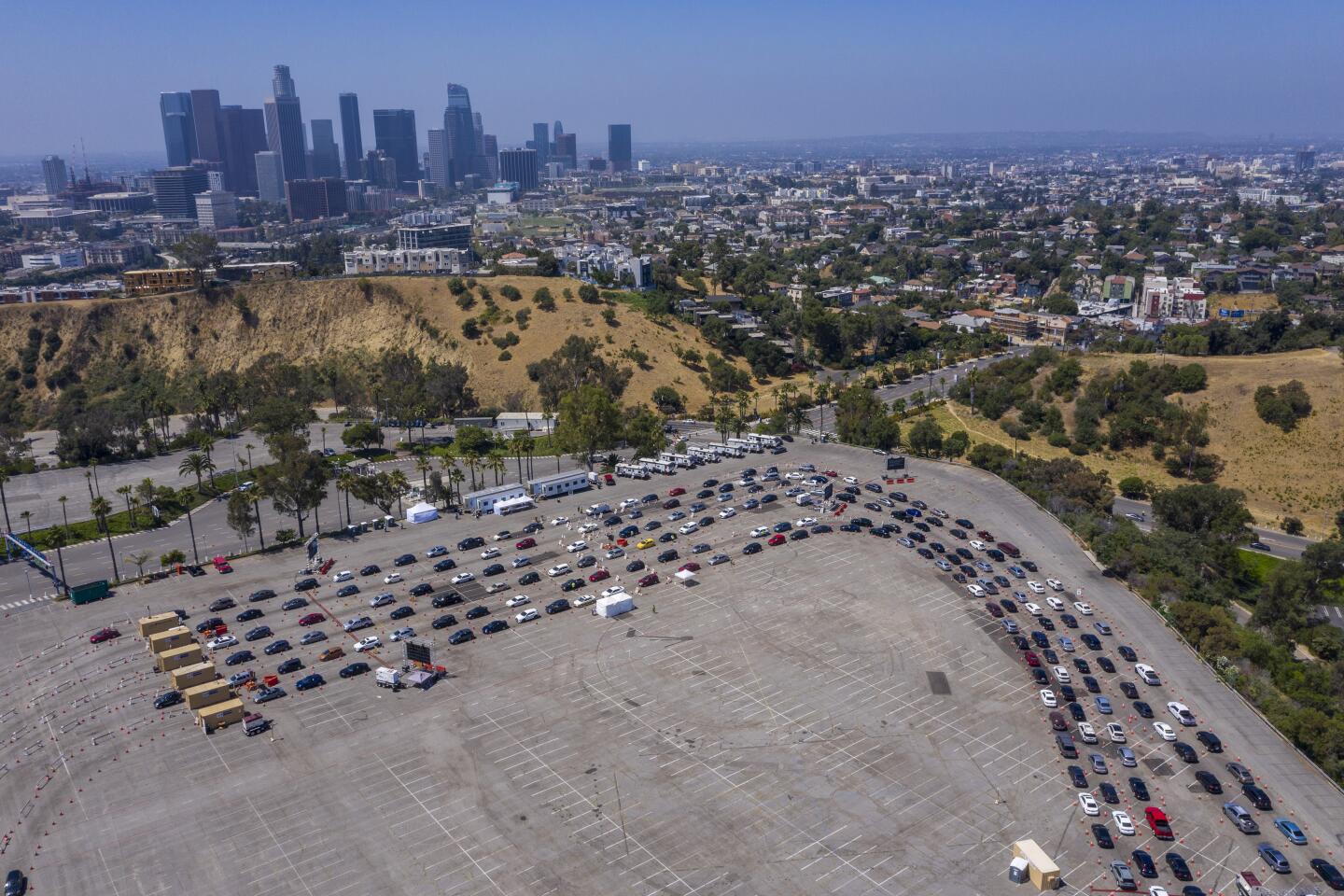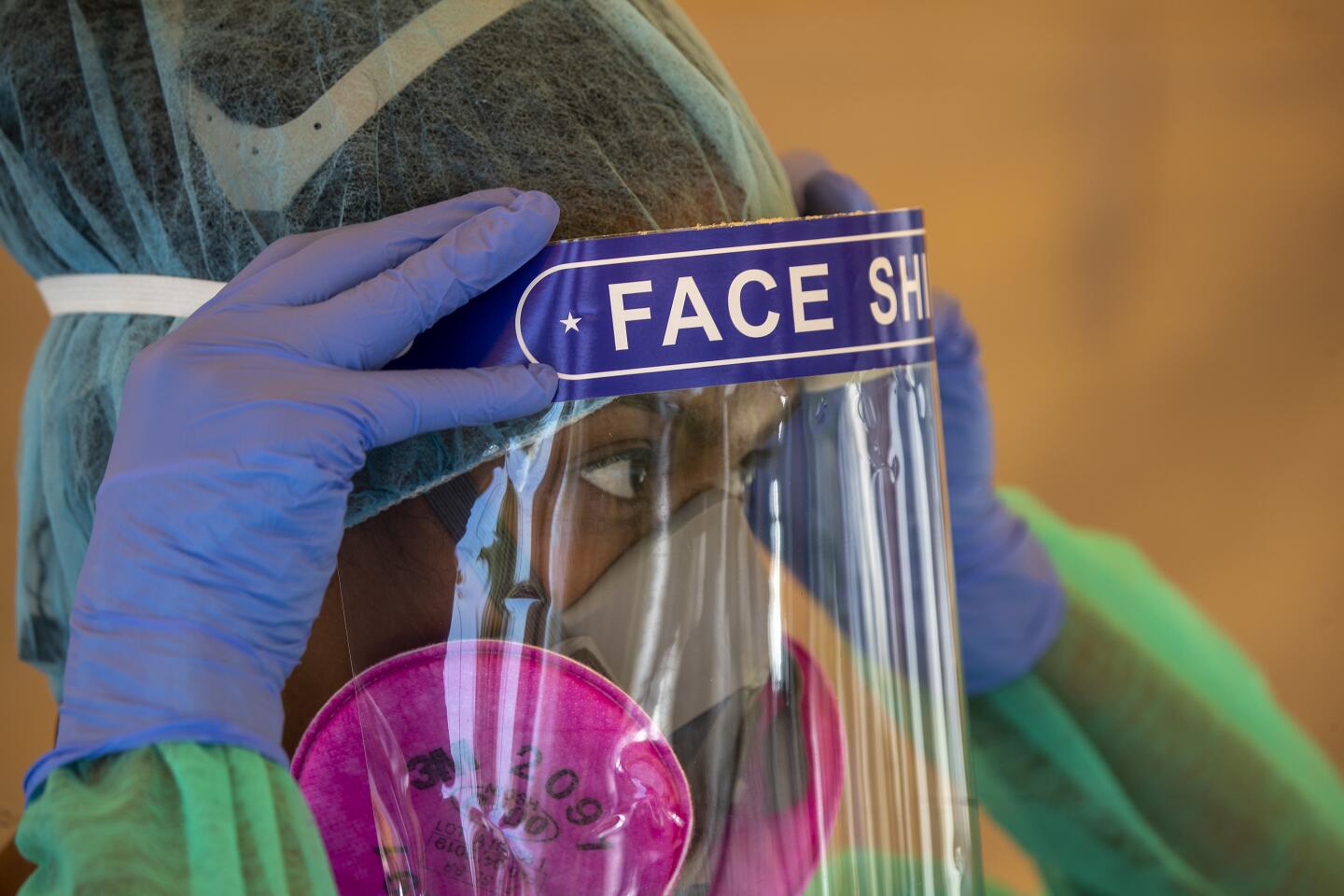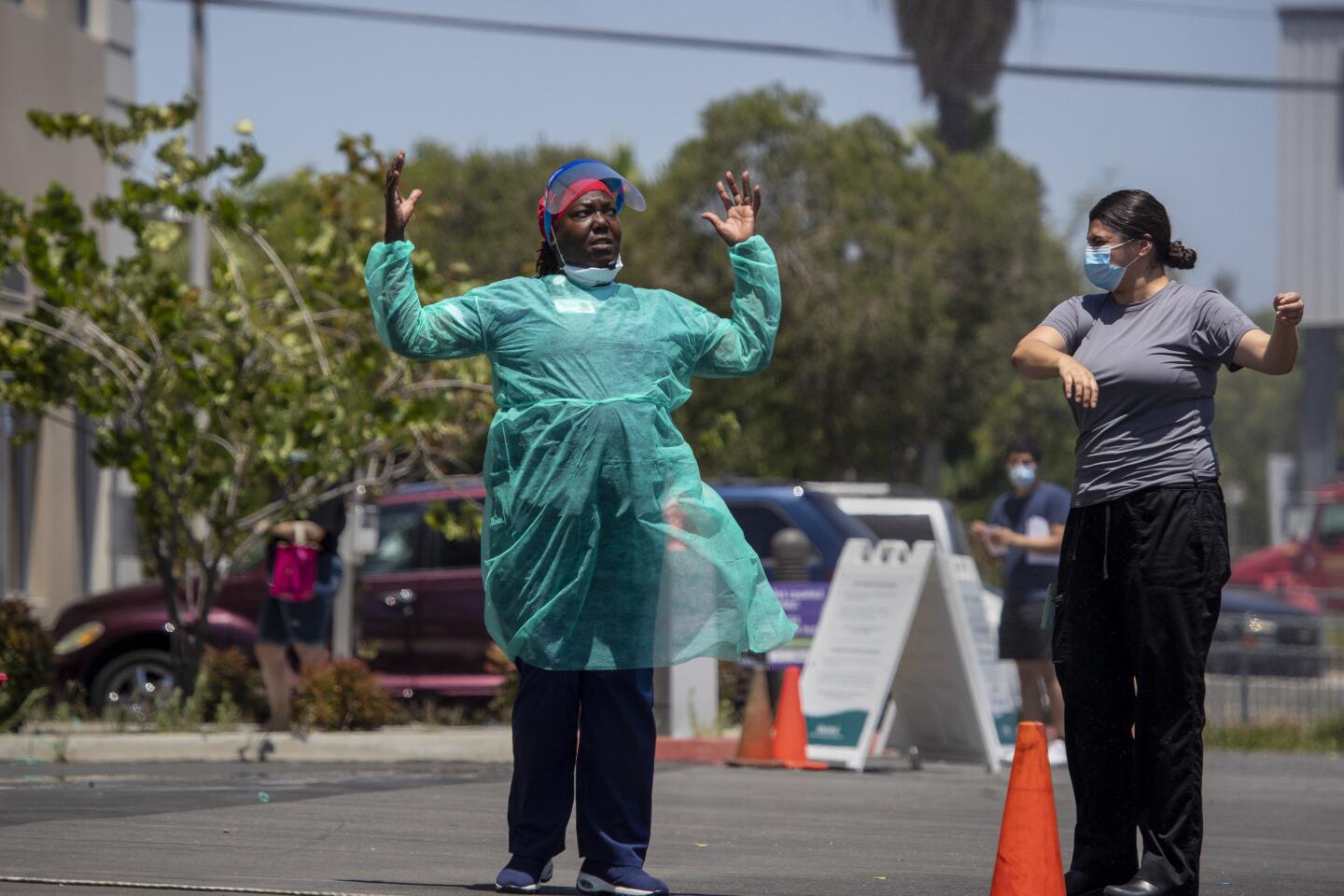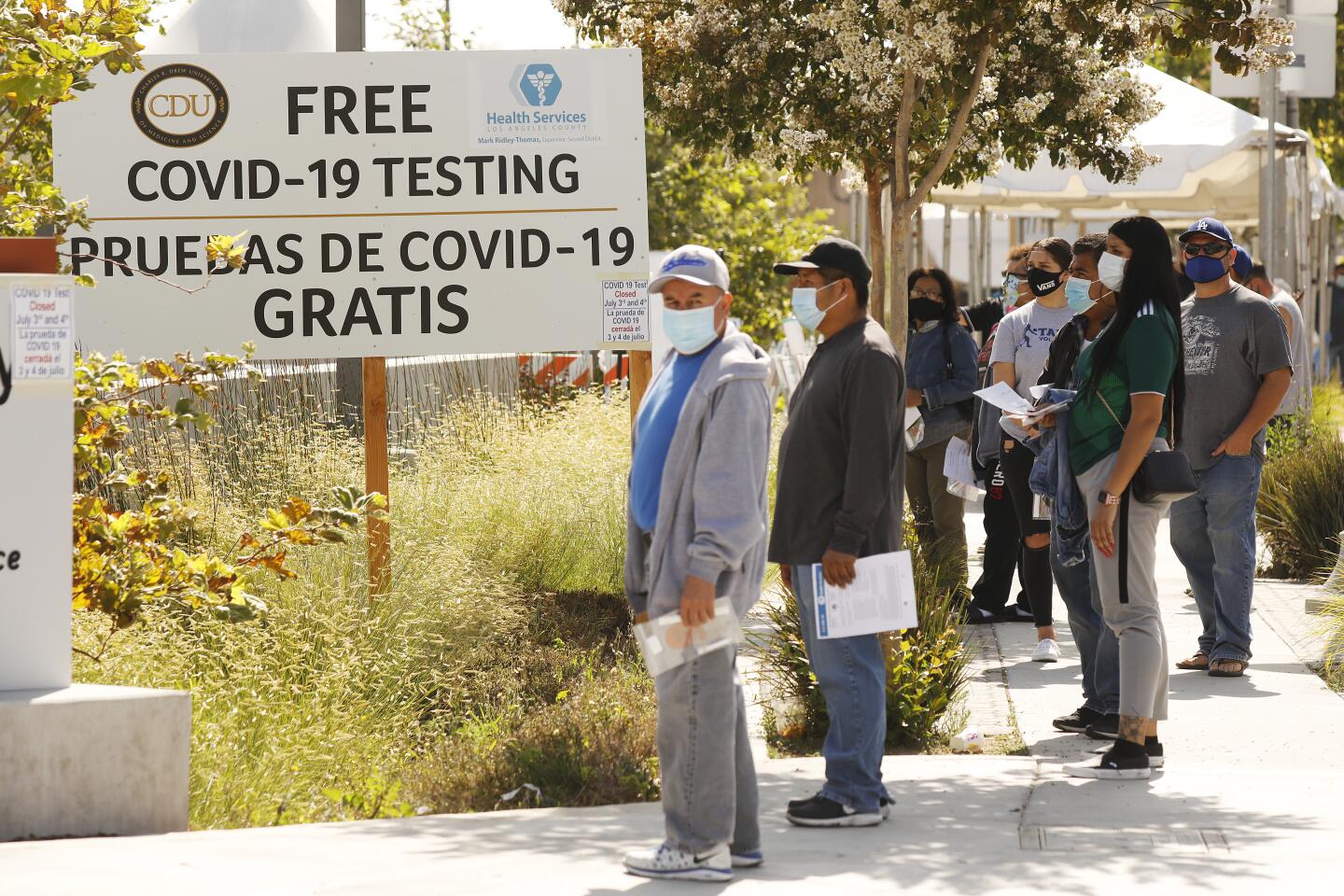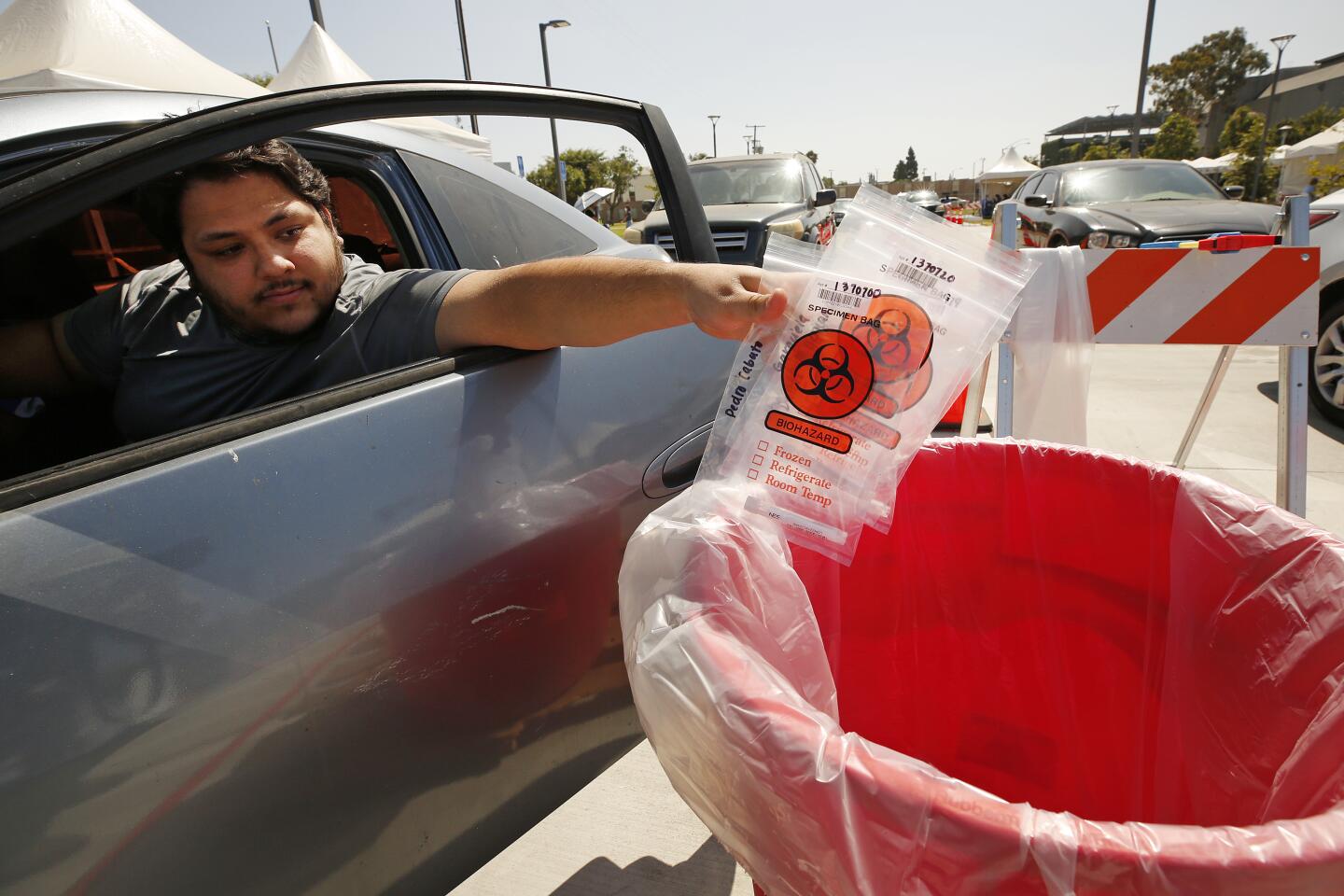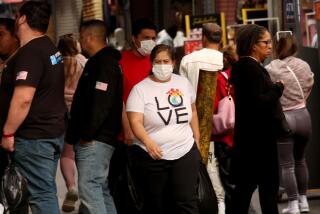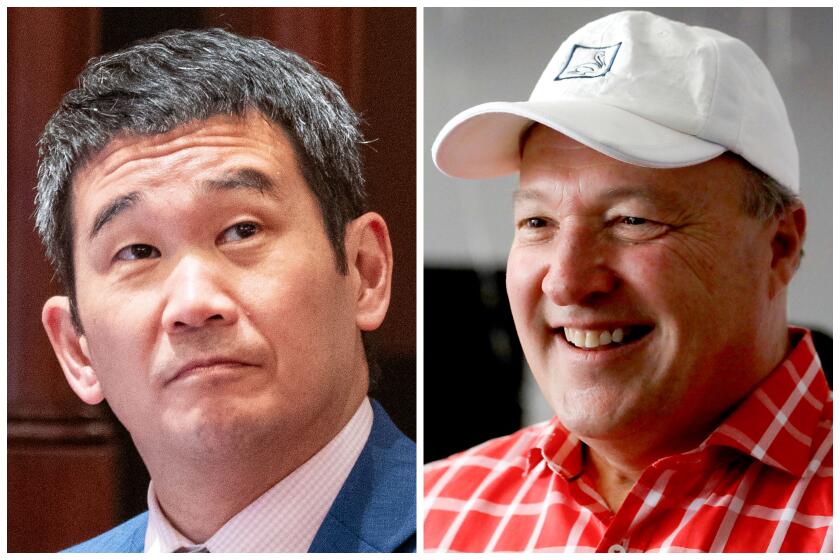Newsom tries to quell furor over data errors after administration shakeup
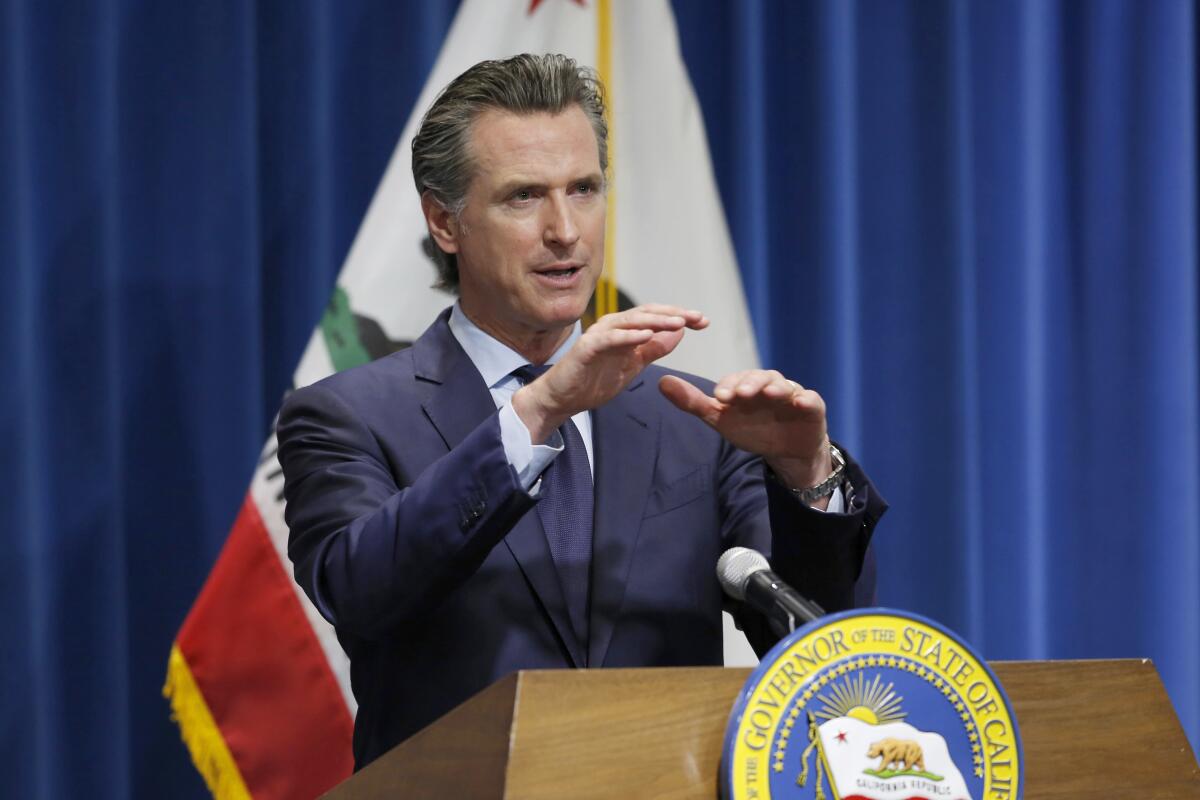
SACRAMENTO — Responding to one of California’s biggest setbacks since the beginning of the COVID-19 pandemic, Gov. Gavin Newsom on Monday said his administration has fixed a public health computer database failure that distorted test results across the state and raised doubts about actions taken to stem the spread of coronavirus.
Newsom faced reporters for the first time since he touted the inaccurate data as a positive sign of fewer infections a day before the glitches became public. The governor said he was unaware of the problem, even though state health officials warned counties about data issues days earlier.
On Sunday, the state announced the abrupt departure of Dr. Sonia Angell, the director of the California Department of Public Health, the agency in charge of collecting the electronic test results.
Second wave of coronavirus has businesses and the public moving from indoors to the great outdoors
“These things are unfortunate, but we are moving forward,” Newsom told reporters during a news briefing Monday in Sacramento. “I’m governor. The buck stops with me.”
Newsom declined to say whether he asked Angell to resign and sidestepped a question about her leadership of the agency during the pandemic. He said he felt it was appropriate to accept her resignation.
“She resigned. She wrote a resignation letter, and I accepted her resignation,” Newsom said. “We’re all accountable in our respective roles for what happens underneath us.”
Newsom blamed the issues with the California Reportable Disease Information Exchange, or CalREDIE, on the state’s archaic technology systems and cited similar processing delays and problems at the Department of Motor Vehicles and the state Employment Development Department, which has faced sharp criticism for failing to process unemployment insurance applications filed by millions of out-of-work Californians. The governor said replacing those systems is one of this administration’s top priorities.
Rob Stutzman, a Republican consultant and former communications director to Gov. Arnold Schwarzenegger, said Newsom’s explanation Monday on the data failure and Angell’s departure fell far short of the public accountability Californians deserve.
“It took him a week to stand in front of Californians and address this issue,” Stutzman said. “…He owes a better explanation of the Sunday night massacre that led to her departure.”
Dr. Mark Ghaly, California’s health and human services director, said between 250,000 and 300,000 test results had not been uploaded to the database, and that the malfunction began on July 25. Ghaly said all of those problems have been fixed, all backlogged data have been processed, and that the information had been shared with county health officials across the state.
To ensure that the state doesn’t experience similar breakdowns, computing capacity was increased fourfold at CalREDIE, the electronic disease reporting and surveillance system overseen by the California Department of Public Health, Ghaly said.
Still, the Newsom administration’s decisions on which counties would be allowed to resume activities and reopen schools and businesses, including restaurants, were based in part on positive coronavirus test data.
Los Angeles Mayor Eric Garcetti last week said it was his understanding the data had been problematic for some time.
“We don’t believe that it’s something that just happened in the last two or three weeks. The state has told us that these reporting problems may have been throughout [the pandemic],” Garcetti told reporters Wednesday. “So it would be, I think, wrong to conclude that somehow numbers have come down because the reporting system just in the last two weeks has changed. This is something that they’ve uncovered that probably has been with us since months ago.”
On Friday, Ghaly said that a server outage caused a delay in health records flowing into CalREDIE and that mistakes by the administration exacerbated the problem.
“The governor has directed a full investigation of what happened and we will hold people accountable,” Ghaly said last week.
After the July 25 server outage caused a delay in processing data, the state implemented “technical changes that allowed the records to flow into the system more quickly,” Ghaly said. The changes needed to be disabled later, but weren’t, which caused “further delays in our reporting of lab data and creating an extensive backlog,” he said.
Officials also discovered that Quest Diagnostics, one of the biggest labs in the state, was unable to report lab data to the system for five days from July 31 through Aug. 4, further skewing the data. Ghaly said the state failed to renew a certificate that allowed Quest to transmit information into the system.
The California Department of Public Health told counties of a data problem in a July 31 email and referenced an earlier notice about the issue. Newsom said he was not aware of the data inaccuracies when he described a steep drop in positive test results as a good sign three days later.
County officials had also raised questions about the data for months. Ghaly said on Friday that he’s working to understand communication issues at California Health and Human Services and the California Department of Public Health.
Without an accurate picture of confirmed cases, many local officials who rely on the CalREDIE system had to conduct their own tallies to understand how the virus spread in their communities. Several counties throughout the state are applying for waivers to reopen schools. That allowance, like state permission for counties to reopen certain businesses, relies heavily on data tied to case counts and hospitalizations.
After officials discovered the data backlog, the state stopped adding and removing counties from its watchlist of areas experiencing higher rates of transmission, which subjects them to more restrictions than parts of California with lower caseloads. Thirty-eight counties, representing 97% of the state’s population, are on the list.
Newsom said he is confident that the updated statewide data on the rate of positive coronavirus tests will “look favorable,” and cited other public health indicators showing a decline in COVID-19-related hospitalizations.
More than 10,000 Californians have died from COVID-19, and 560,000 have been diagnosed with the virus. The pandemic has put millions of Californians out of work, devastated the economy and is forcing most California schools to shut down classrooms and begin the academic year using distance learning programs. The Dodgers and other professional sports teams are playing games in stadiums and arenas without fans and, to lessen the risks of the virus spreading on election day, all registered California voters will receive a mail-in ballot.
Angell, the state’s departing director of public health, appeared alongside Newsom in his public briefings on the state’s efforts to combat the pandemic. She was considered a key player in the state’s coordination with local public health departments across California and, as the state’s top public health officer, was responsible for issuing the statewide mask mandate.
Appointed department director and state public health officer by Newsom in October, she was the first Latina to serve in the role. Angell announced her departure, effective immediately, in an email to staff on Sunday night. She did not give a reason for her resignation in the letter. Her salary in the position was $275,650, more than Newsom makes as governor.
Before taking the job in California, Angell was deputy commissioner at the New York City Department of Public Health and Mental Hygiene and previously worked as a senior advisor for the global noncommunicable disease unit at the Centers for Disease Control and Prevention.
Her job responsibilities will be split between two women, state officials said: Sandra Shewry will take over as acting director of the Department of Public Health, and Dr. Erica Pan will shift to become the acting state public health officer after having joined the state’s public health department in June as the state’s epidemiologist.
Shewry, who is vice president at the nonprofit California Health Care Foundation, previously oversaw the state’s Medi-Cal program under Schwarzenegger. Pan, who previously was Alameda County’s health officer, notably clashed with Tesla Chief Executive Elon Musk in May over his electric car factory’s decision to restart production despite shelter-at-home orders at the time.
Sen. Richard Pan (D-Sacramento), who is not related to Dr. Erica Pan, said he understands the need to temporarily split Angell’s job into two positions, but that the roles should not be separated for long.
“You need to have one voice, a person who is speaking as the state’s public health officer who oversees the state’s public health department,” said Pan, a pediatrician. “Otherwise, it reduces the authority of the state’s public health officer.”
He said turnover in the top ranks of the state’s public health department is significant.
“It’s a loss to suddenly have the director and state’s public health officer leave during a pandemic,” Pan said. “It’s critical for the governor and administration to ensure there is confidence in the public health leadership … The data issue has undermined confidence and you suddenly have the director leaving, which raises questions as to why. The administration needs to explain the issue that led to this.”
Times staff writers John Myers and Dakota Smith contributed to this report.
More to Read
Sign up for Essential California
The most important California stories and recommendations in your inbox every morning.
You may occasionally receive promotional content from the Los Angeles Times.

